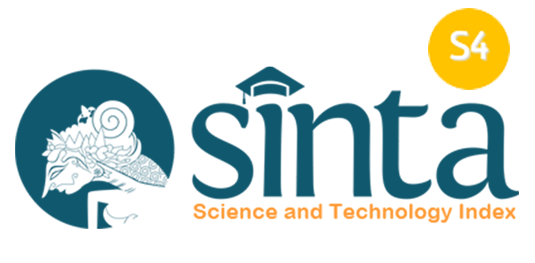Comparative Removal of Chromium Cr(VI) from Wastewater by Sawdust and Activated Charcoal Derived from Acacia and Sheesham Wood
Abstract
This study investigates the removal of Chromium (VI) (Cr(VI)) ions from simulated wastewater using various adsorbents. The experiment employs unmodified sawdust (UMSD) and modified sawdust (MSD), along with activated charcoal (AC) derived from Acacia and Sheesham (Dalbergia Sissoo) wood. Batch experiments were conducted to assess the impact of several parameters including solution pH, adsorbent dosage (g/250 mL), contact time (minutes), and initial Cr(VI) concentration (ppm) on Cr(VI) adsorption at room temperature and pressure. SEM along with EDX as well as FTIR were used to analyze the adsorbent surface chemistry. The results revealed that AC exhibited the maximum Cr(VI) removal efficiency (90%) from the simulated wastewater due to its larger surface area as compared to UMSD (55%) and MSD (78%). Models of Freundlich and Langmuir isotherms were used to assess the adsorption process. Analysis of the model constants indicated that the Freundlich isotherm better described the experimental data for all adsorbents, as evidenced by the high correlation coefficient (R² = 0.99).
Keywords
Full Text:
PDFReferences
Achak, M., Hafidi, A., Ouazzani, N., Sayadi, S., & Mandi, L. (2009). Low cost biosorbent “banana peel” for the removal of phenolic compounds from olive mill wastewater: Kinetic and equilibrium studies. Journal of Hazardous Materials, 166(1), 117–125. https://doi.org/10.1016/J.JHAZMAT.2008.11.036
Ahmad, F., Fouad, E., & Ahmad, N. (2014). Removal of lead from wastewater by adsorption Using Saudi Arabian Clay. In International Journal of Chemical and Environmental Engineering (Vol. 5, Issue 2).
Ajmani, A., Shahnaz, T., Subbiah, S., & Narayanasamy, S. (2019). Hexavalent chromium adsorption on virgin, biochar, and chemically modified carbons prepared from Phanera vahlii fruit biomass: equilibrium, kinetics, and thermodynamics approach. Environmental Science and Pollution Research, 26(31), 32137–32150. https://doi.org/10.1007/s11356-019- 06335-z
Al-Asheh, S., Banat, F., Al-Omari, R., & Duvnjak, Z. (2000). Predictions of binary sorption isotherms for the sorption of heavy metals by pine bark using single isotherm data. Chemosphere, 41(5), 659–665. https://doi.org/10.1016/S0045-6535(99)00497-X
Alatabe, M. J. A., & Hussein, A. A. (2021). Review Paper. Utilization of Low-Cost Adsorbents for the Adsorption Process of Chromium ions. IOP Conference Series: Materials Science and Engineering, 1076(1), 012095. https://doi.org/10.1088/1757-899X/1076/1/012095
Al-Ghouti, M. A., & Da’ana, D. A. (2020). Guidelines for the use and interpretation of adsorption isotherm models: A review. Journal of Hazardous Materials, 393, 122383. https://doi.org/10.1016/J.JHAZMAT.2020.122383
Ali, A. H., Attia, H. G., & Muhaisan, F. F. (2014). Modification Of The Granular Activated Carbon And Its Effect On Removal Of Cr(VI) From Aqueous Solution In Batch And Fixed- Bed Systems. Journal of Engineering and Sustainable Development, 18(1), 78–94. https://jeasd.uomustansiriyah.edu.iq/index.php/jeasd/article/view/851
Avola, T., Campisi, S., Polito, L., Arici, S., Ferruti, L., & Gervasini, A. (2023a). Addressing the issue of surface mechanisms and competitive effects in Cr(VI) reductive-adsorption on tin- hydroxyapatite in the presence of co-ions. Scientific Reports 2023 13:1, 13(1), 1–14. https://doi.org/10.1038/s41598-023-44852-7
Avola, T., Campisi, S., Polito, L., Arici, S., Ferruti, L., & Gervasini, A. (2023b). Addressing the issue of surface mechanisms and competitive effects in Cr(VI) reductive-adsorption on tin- hydroxyapatite in the presence of co-ions. Scientific Reports, 13(1). https://doi.org/10.1038/s41598-023-44852-7
Avola, T., Campisi, S., Polito, L., Arici, S., Ferruti, L., & Gervasini, A. (2023c). Addressing the issue of surface mechanisms and competitive effects in Cr(VI) reductive-adsorption on tin- hydroxyapatite in the presence of co-ions. Scientific Reports 2023 13:1, 13(1), 1–14. https://doi.org/10.1038/s41598-023-44852-7
Ayawei, N., Ebelegi, A. N., & Wankasi, D. (2017). Modelling and Interpretation of Adsorption Isotherms. Journal of Chemistry, 2017. https://doi.org/10.1155/2017/3039817
Barkat, M., Nibou, D., Chegrouche, S., & Mellah, A. (2009). Kinetics and thermodynamics studies of chromium(VI) ions adsorption onto activated carbon from aqueous solutions. Chemical Engineering and Processing: Process Intensification, 48(1), 38–47. https://doi.org/10.1016/J.CEP.2007.10.004
Boparai, H. K., Joseph, M., & O’Carroll, D. M. (2011). Kinetics and thermodynamics of cadmium ion removal by adsorption onto nano zerovalent iron particles. Journal of Hazardous Materials, 186(1), 458–465. https://doi.org/10.1016/J.JHAZMAT.2010.11.029
Burant, A., Selbig, W., Furlong, E. T., & Higgins, C. P. (2018a). Trace organic contaminants in urban runoff: Associations with urban land-use. Environmental Pollution (Barking, Essex : 1987), 242(Pt B), 2068–2077. https://doi.org/10.1016/J.ENVPOL.2018.06.066
Burant, A., Selbig, W., Furlong, E. T., & Higgins, C. P. (2018b). Trace organic contaminants in urban runoff: Associations with urban land-use. Environmental Pollution, 242, 2068–2077. https://doi.org/10.1016/J.ENVPOL.2018.06.066
Cao, X., Zhou, X., Hao, M., & Mei, X. (2021). Removal of Cr(VI) from aqueous solutions using montmorillonite-biochar composites. Desalination and Water Treatment, 215, 98–107. https://doi.org/10.5004/dwt.2021.26759
Chaiwon, T., Jannoey, P., & Channei, D. (2017a). Preparation of activated carbon from sugarcane bagasse waste for the adsorption equilibrium and kinetics of basic dye. Key Engineering Materials, 751 KEM, 671–676. https://doi.org/10.4028/WWW.SCIENTIFIC.NET/KEM.751.671
Chaiwon, T., Jannoey, P., & Channei, D. (2017b). Preparation of activated carbon from sugarcane bagasse waste for the adsorption equilibrium and kinetics of basic dye. Key Engineering Materials, 751 KEM, 671–676. https://doi.org/10.4028/WWW.SCIENTIFIC.NET/KEM.751.671
Chandio, T. A., Khan, M. N., Muhammad, M. T., Yalcinkaya, O., Turan, E., & Kayis, A. F. (2021). Health risk assessment of chromium contamination in the nearby population of mining plants, situated at Balochistan, Pakistan. Environmental Science and Pollution Research, 28(13), 16458–16469. https://doi.org/10.1007/S11356-020-11649-4/TABLES/6
Crini, G. (2006). Non-conventional low-cost adsorbents for dye removal: A review. Bioresource Technology, 97(9), 1061–1085. https://doi.org/10.1016/J.BIORTECH.2005.05.001
Farhan, A. M., Al-Dujaili, A. H., & Awwad, A. M. (2013). Equilibrium and kinetic studies of cadmium(II) and lead(II) ions biosorption onto Ficus carcia leaves. International Journal of Industrial Chemistry, 4(1). https://doi.org/10.1186/2228-5547-4-24
Farooq, U., Kozinski, J. A., Khan, M. A., & Athar, M. (2010). Biosorption of heavy metal ions using wheat based biosorbents – A review of the recent literature. Bioresource Technology, 101(14), 5043–5053. https://doi.org/10.1016/J.BIORTECH.2010.02.030
Febrianto, J., Kosasih, A. N., Sunarso, J., Ju, Y. H., Indraswati, N., & Ismadji, S. (2009).
Equilibrium and kinetic studies in adsorption of heavy metals using biosorbent: A summary of recent studies. Journal of Hazardous Materials, 162(2–3), 616–645. https://doi.org/10.1016/J.JHAZMAT.2008.06.042
Hafiz Bilal Ahmad. (2020). Comparative Study of Cr (VI) Adsorption from Synthetic Wastewater Using Chemically Modified Mixed Sawdust and Activated Charcoal of Acacia and Sheesham Wood. University of the Punjab, Lahore Pakistan.
Hashem, M. A., Payel, S., Mim, S., Hasan, M. A., Nur-A-Tomal, M. S., Rahman, M. A., & Sarker, M. I. (2022). Chromium adsorption on surface activated biochar made from tannery liming sludge: A waste-to-wealth approach. Water Science and Engineering, 15(4), 328– 336. https://doi.org/10.1016/J.WSE.2022.09.001
Kim, C., Zhou, Q., Deng, B., Thornton, E. C., & Xu, H. (2001). Chromium(VI) reduction by hydrogen sulfide in aqueous media: Stoichiometry and kinetics. Environmental Science and Technology, 35(11), 2219–2225. https://doi.org/10.1021/ES0017007
Liu, Y., Liang, Y., Cui, W., Zhai, H., & Ji, M. (2024). Efficient Removal of Cr(VI) from Wastewater by Magnetic Biochar Derived from Peanut Hull. Water, Air, and Soil Pollution, 235(2), 1–12. https://doi.org/10.1007/S11270-024-06912-0/TABLES/4
Miao, S., Guo, J., Deng, Z., Yu, J., & Dai, Y. (2022). Adsorption and reduction of Cr(VI) in water by iron-based metal-organic frameworks (Fe-MOFs) composite electrospun nanofibrous membranes. Journal of Cleaner Production, 370, 133566. https://doi.org/10.1016/J.JCLEPRO.2022.133566
Mohan, D., Rajput, S., Singh, V. K., Steele, P. H., & Pittman, C. U. (2011). Modeling and evaluation of chromium remediation from water using low cost bio-char, a green adsorbent. Journal of Hazardous Materials, 188(1–3), 319–333. https://doi.org/10.1016/J.JHAZMAT.2011.01.127
Mukherjee, S., Kumar, S., Misra, A. K., & Fan, M. (2007a). Removal of phenols from water environment by activated carbon, bagasse ash and wood charcoal. Chemical Engineering Journal, 129(1–3), 133–142. https://doi.org/10.1016/J.CEJ.2006.10.030
Mukherjee, S., Kumar, S., Misra, A. K., & Fan, M. (2007b). Removal of phenols from water environment by activated carbon, bagasse ash and wood charcoal. Chemical Engineering Journal, 129(1–3), 133–142. https://doi.org/10.1016/J.CEJ.2006.10.030
Neolaka, Y. A. B., Lawa, Y., Naat, J. N., Riwu, A. A. P., Iqbal, M., Darmokoesoemo, H., & Kusuma, H. S. (2020). The adsorption of Cr(VI) from water samples using graphene oxide- magnetic (GO-Fe3O4) synthesized from natural cellulose-based graphite (kusambi wood or Schleichera oleosa): Study of kinetics, isotherms and thermodynamics. Journal of Materials Research and Technology, 9(3), 6544–6556. https://doi.org/10.1016/J.JMRT.2020.04.040
Patel, H. (2018). Charcoal as an adsorbent for textile wastewater treatment. Separation Science and Technology (Philadelphia), 53(17), 2797–2812. https://doi.org/10.1080/01496395.2018.1473880
Prasankumar, T., Salpekar, D., Bhattacharyya, S., Manoharan, K., Yadav, R. M., Campos Mata, M. A., Miller, K. A., Vajtai, R., Jose, S., Roy, S., & Ajayan, P. M. (2022). Biomass derived hierarchical porous carbon for supercapacitor application and dilute stream CO2 capture. Carbon, 199, 249–257. https://doi.org/10.1016/J.CARBON.2022.07.057
Sinha, R., Kumar, R., Abhishek, K., Shang, J., Bhattacharya, S., Sengupta, S., Kumar, N., Singh, R. K., Mallick, J., Kar, M., & Sharma, P. (2022). Single-step synthesis of activated magnetic biochar derived from rice husk for hexavalent chromium adsorption: Equilibrium mechanism, kinetics, and thermodynamics analysis. Groundwater for Sustainable Development, 18, 100796. https://doi.org/10.1016/J.GSD.2022.100796
Stasinakis, A. S., Thomaidis, N. S., Mamais, D., Karivali, M., & Lekkas, T. D. (2003).
Chromium species behaviour in the activated sludge process. Chemosphere, 52(6), 1059– 1067. https://doi.org/10.1016/S0045-6535(03)00309-6
Üner, O., Geçgel, Ü., & Bayrak, Y. (2019). Preparation and characterization of mesoporous activated carbons from waste watermelon rind by using the chemical activation method with zinc chloride. Arabian Journal of Chemistry, 12(8), 3621–3627. https://doi.org/10.1016/J.ARABJC.2015.12.004
Vo, A. T., Nguyen, V. P., Ouakouak, A., Nieva, A., Doma, B. T., Tran, H. N., & Chao, H. P. (2019). Efficient Removal of Cr(VI) from Water by Biochar and Activated Carbon Prepared through Hydrothermal Carbonization and Pyrolysis: Adsorption-Coupled Reduction Mechanism. Water 2019, Vol. 11, Page 1164, 11(6), 1164. https://doi.org/10.3390/W11061164
Wan Ngah, W. S., & Hanafiah, M. A. K. M. (2008). Removal of heavy metal ions from wastewater by chemically modified plant wastes as adsorbents: A review. Bioresource Technology, 99(10), 3935–3948. https://doi.org/10.1016/J.BIORTECH.2007.06.011
Waseem, A., Arshad, J., Iqbal, F., Sajjad, A., Mehmood, Z., & Murtaza, G. (2014). Pollution Status of Pakistan: A Retrospective Review on Heavy Metal Contamination of Water, Soil, and Vegetables. BioMed Research International, 2014. https://doi.org/10.1155/2014/813206
Yang, L., & Chen, J. P. (2008). Biosorption of hexavalent chromium onto raw and chemically modified Sargassum sp. Bioresource Technology, 99(2), 297–307. https://doi.org/10.1016/J.BIORTECH.2006.12.021
Yusuff, A. S., Popoola, L. T., & Igbafe, A. I. (2022). Response surface modeling and optimization of hexavalent chromium adsorption onto eucalyptus tree bark-derived pristine and chemically-modified biochar. Chemical Engineering Research and Design, 182, 592– 603. https://doi.org/10.1016/J.CHERD.2022.04.007
Zhao, J., & Xia, L. (2010). Bioconversion of corn stover hydrolysate to ethanol by a recombinant yeast strain. Fuel Processing Technology, 91(12), 1807–1811. https://doi.org/10.1016/J.FUPROC.2010.08.002
DOI: https://doi.org/10.29103/cejs.v4i6.19191
 Article Metrics
Article Metrics
 Abstract Views : 44 times
Abstract Views : 44 times
Refbacks
- There are currently no refbacks.
Copyright (c) 2025 Shoaib Ahmad, Bilal Haider, Hafiz Bilal Ahmad, Amir Shafeeq

This work is licensed under a Creative Commons Attribution-ShareAlike 4.0 International License.
Chemical Engineering Journal Storage (CEJS) , Jalan Batam No 02 Universitas Malikussaleh Kampus Bukit Indah.

This work is licensed under a Creative Commons Attribution-ShareAlike 4.0 International License.







